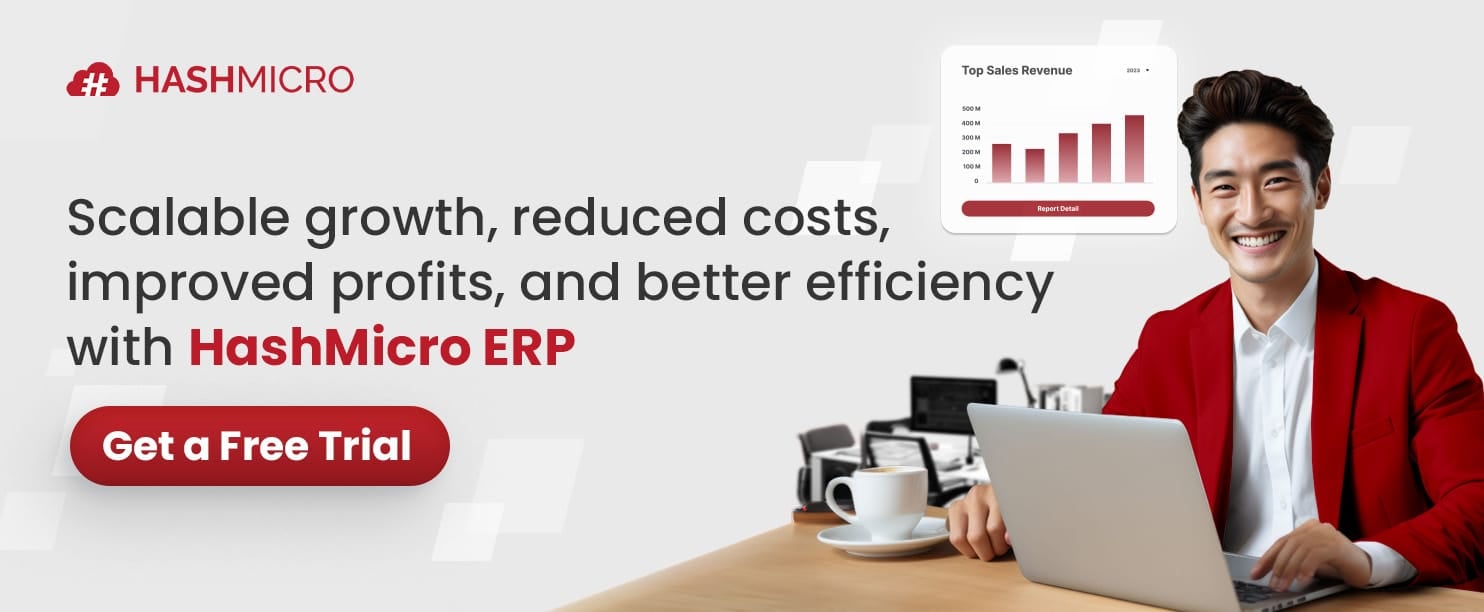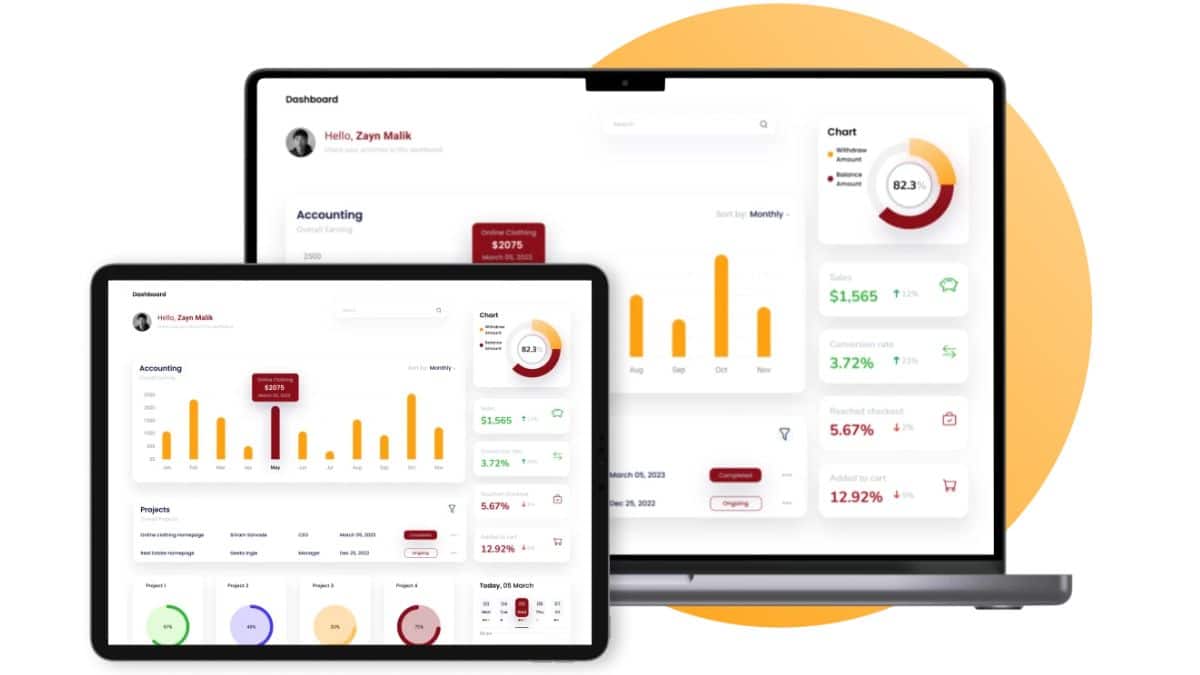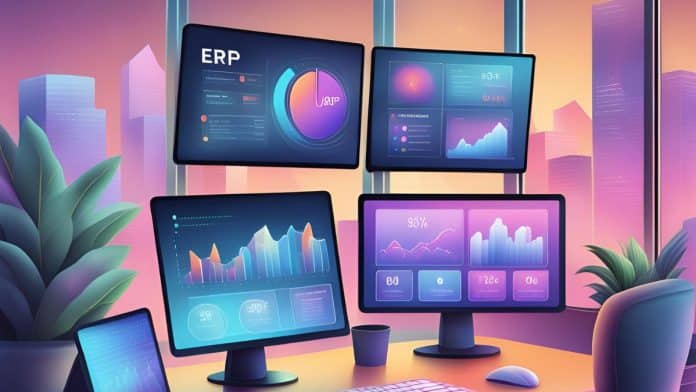Implementing a two-tier ERP system is not without challenges. Companies often face issues with system integration, data synchronization, and customization to meet corporate and subsidiary needs, which can lead to inefficiencies if not correctly managed.
As businesses expand and diversify, managing multiple operations efficiently becomes increasingly challenging. Adopting a two-tier ERP strategy offers a powerful solution, helping large enterprises streamline operations while maintaining flexibility for their subsidiaries.
For example, a study by the Malaysian Productivity Corporation (MPC) highlights the growing adoption of two-tier ERP systems in the region to enhance operational efficiency. Many companies are embracing this approach to manage different branches and subsidiaries effectively.
If you’re considering Malaysia ERP software for your business, keep reading to discover how this strategy can transform your operations and how HashMicro’s ERP solutions can perfectly fit your company’s needs.
Table of Content
Content Lists

Key Takeaways
|
What is Two-Tier ERP?
A two-tier ERP strategy involves using two distinct ERP systems, each designed to address the needs of large corporations and their subsidiaries. The Tier 1 ERP system manages essential functions at the corporate level, such as finance and HR. In contrast, the Tier 2 ERP system is customized for smaller business units to optimize specific processes, like sales or manufacturing.
Under this approach, Tier 1 ERP systems are highly customized to support global operations, offering scalability for large enterprises with multiple locations. Meanwhile, Tier 2 ERP systems cater to subsidiaries or smaller units more flexibly, ensuring each division operates efficiently while aligning with the parent company’s overarching goals.
For two-tier ERP to work effectively, both systems must be properly connected so that data flows smoothly from the subsidiary’s Tier 2 ERP to the corporate Tier 1 ERP. This way, real-time data is available across the company, so the higher-ups can master data management and have better decision-making.
The popularity of two-tier ERP has grown due to its cost-effectiveness compared to traditional, monolithic ERP systems. With lower implementation costs and more out-of-the-box functionality, businesses can quickly integrate subsidiaries without requiring extensive configuration or a complete overhaul of their enterprise systems.
Tier 1 vs. Tier 2 ERP

Tier 1 ERP systems are designed for the largest enterprises with global operations and complex business needs. These systems offer a broad range of functionalities but come at a high cost in installation, maintenance, and customization, often requiring dedicated IT teams for management.
In contrast, Tier 2 ERP systems cater to midsize and smaller enterprises, offering a more affordable and quicker deployment option. While Tier 2 ERP systems may not have the extensive capabilities of Tier 1, they still provide essential functionalities for operations like accounting, sales, and inventory management, often tailored to specific industries like manufacturing or retail.
A two-tier ERP system strategy combines the strengths of Tier 1 and Tier 2 systems, enabling businesses to customize solutions for more significant operations while meeting the needs of smaller subsidiaries.
Benefits of Two-Tier ERP

Implementing a two-tier ERP system can significantly enhance your business’s operational efficiency and flexibility. By utilizing Tier 1 and Tier 2 ERP systems, companies can achieve streamlined operations while maintaining the scalability needed for growth and adaptability to market changes.
In this section, we will outline how adopting a two-tier approach can bring valuable benefits to your business and help optimize your processes:
1. Cost savings
One of the most significant advantages of a two-tier ERP strategy is cost savings, particularly for businesses going through mergers or acquisitions. By implementing a Tier 2 ERP system for subsidiaries, companies can significantly reduce implementation, maintenance, and upgrade costs.
The ability to standardize multiple subsidiaries on the same system further reduces the need for additional IT resources, optimizing efficiency. These savings allow companies to redirect funds toward other essential business areas.
2. Meeting specific business needs
A two-tier ERP system enables businesses to tailor solutions to each business unit’s unique operational requirements. For example, subsidiaries operating in different markets or industries may require a more specialized ERP to meet their specific needs and improve efficiency.
Unlike Tier 1 ERP systems designed for large-scale operations, Tier 2 ERP focuses on smaller, specialized functions that suit the unique requirements of subsidiaries. This targeted approach ensures that each business unit operates with the most relevant, compelling software solution.
3. Greater flexibility and control
Tier 2 HRM software is lighter and easier to adjust, allowing businesses to make changes when needed quickly. This flexibility helps smaller units of a company, like HR departments, respond faster to changes in employee needs and market demands.
It also gives them more control over daily operations, enabling them to tailor HR processes such as payroll, attendance, and benefits management to their specific needs. This autonomy helps businesses stay agile and competitive in a rapidly changing environment.
4. Addressing local requirements
In a global business environment, subsidiaries may have to comply with different currencies, languages, or local regulations. A two-tier ERP strategy allows Tier 2 systems to accommodate these local differences effectively, providing customized solutions that Tier 1 systems may overlook.
This localized approach helps businesses adhere to regional laws while maintaining operational efficiency. It also allows companies to cater to diverse customer needs with a solution better aligned with local market demands.
5. Better user experience
Tier 2 ERP systems offer a better user experience due to their more straightforward and intuitive interfaces. These systems are designed with ease of use in mind, so the complexity and learning curve commonly associated with Tier 1 systems are reduced.
As a result, employees can adopt the system more quickly, minimizing training time and costs. The improved usability also boosts productivity, as users can focus on leveraging the software for operational efficiency instead of struggling with complicated features.
6. Simplified integration and faster deployment
Integration between Tier 1 and Tier 2 systems is more straightforward with two-tier ERP systems, especially when both are cloud-based. This enables businesses to consolidate operations across subsidiaries and headquarters seamlessly, facilitating smoother data exchange.
Faster deployment reduces the time it takes to implement the system across various locations, ensuring minimal disruptions to business activities. A well-integrated system helps businesses improve data accuracy and ensures the organization’s alignment.
7. Scalability and adaptability
A two-tier ERP strategy is highly scalable, allowing businesses to expand operations without disrupting existing processes. As companies grow, they can adapt their Tier 2 ERP systems to meet new challenges or operational changes, making managing additional locations or business units easier.
This scalability ensures that businesses can continue to grow while maintaining a streamlined and efficient system across all locations. The adaptability of Tier 2 ERP systems provides the flexibility needed for long-term success.
8. Lower Total Cost of Ownership (TCO)
Cloud-based two-tier ERP solutions generally offer a lower total cost of ownership (TCO) than on-premise systems. With subscription-based pricing, businesses benefit from more predictable ongoing costs without large upfront capital expenditures.
These systems also require fewer resources to maintain, further reducing overall costs. The flexibility in budgeting and lower TCO make two-tier ERP systems a cost-effective choice for businesses looking to optimize operations and finances.
Common Two-Tier ERP Use Cases

Now that we’ve explored the various common two-tier ERP use cases, it’s clear how this strategy can benefit different types of organizations, from acquisitions and divestitures to cloud migrations and regional expansions.
In the next section, we will delve deeper into how you can effectively implement a two-tier ERP strategy and ensure its success within your organization:
-
Acquisitions
A two-tier ERP system is an excellent choice for companies undergoing acquisitions, as it allows for a smooth and quick transition. By moving the acquired entity onto a separate ERP system, businesses can avoid the complexities and high costs of integrating disparate IT infrastructures, ensuring a more efficient and cost-effective process.
-
Incubators and joint ventures
A two-tier ERP strategy offers flexibility and agility for new entities such as incubators or joint ventures. It enables these entities to experiment and grow independently with minimal investment while maintaining the ability to adapt to changing needs, making it an ideal solution for fostering creativity and managing fluid ownership.
-
Regional branches
Two-tier ERP implementation for corporations with regional subsidiaries helps reduce the complexity of managing multiple ERP systems. By integrating a Tier 1 ERP at the headquarters and Tier 2 ERP at regional offices, businesses can achieve a unified view of their operations, enhancing data visibility and reducing management costs, as seen with Hitachi High-Tech.
-
Autonomous divisions
In cases where divisions have separate processes or business models, two-tier ERP systems allow them to operate independently without being governed by the parent company’s system. This strategy benefits organizations like Deutsche Telekom and its consulting division Detecon, where autonomy is key to efficient operations.
-
Divestitures
When a company decides to divest a division, a two-tier ERP system allows the subsidiary to function independently, making it more attractive to potential buyers. This strategy increases the division’s valuation, simplifies transition agreements, and ensures business continuity, facilitating a smoother and more efficient divestiture process.
-
Moving to the cloud
A multi-layer ERP model is invaluable during cloud migrations, allowing businesses to transition gradually and in a controlled manner. Companies like Australian glass manufacturer Viridian showcase how adopting this strategy with a manufacturing ERP system enables them to move specific business units to the cloud, enhancing operational efficiencies and improving business outcomes.
-
Supporting rapid expansion
As companies expand into new regions or markets, two-tier ERP systems offer scalability without overhauling the entire ERP infrastructure. By adopting Tier 2 ERP systems for subsidiaries or new locations, businesses can quickly scale while keeping costs manageable and maintaining the flexibility to adapt to local needs.
-
Enhanced flexibility for diverse markets
A two-tier ERP strategy allows companies operating in multiple industries or regions to provide more focused and specialized solutions. Subsidiaries in different sectors or regions can implement tailored Tier 2 ERP systems to address specific market requirements while still integrating with the enterprise’s two-tier ERP solution for overall consistency.

Overcoming Common Challenges in Two-Tier ERP Implementation

Implementing a two-tier ERP system offers numerous advantages, such as increased efficiency and flexibility, but it also presents several challenges that can hinder successful deployment. The key obstacles range from ensuring data synchronization between systems to overcoming employees’ resistance to change.
Addressing these issues requires proactive planning and the right solutions to ensure that the system integrates smoothly and delivers long-term benefits.
1. Data synchronization
One of the biggest challenges when deploying a two-tier ERP system is ensuring seamless data synchronization between the corporate (Tier 1) and subsidiary (Tier 2) systems. Without proper synchronization, there can be discrepancies in data, leading to errors in reporting and decision-making.
To overcome this, businesses should invest in robust data integration tools that provide real-time synchronization, ensuring that information is accurate and consistent across both systems. For example, a company might use middleware solutions to automatically update data between the two systems without manual input, reducing errors and saving time.
2. Seamless integration
Integrating Tier 1 and Tier 2 ERP systems can be a complex task, especially when both systems handle different processes and workflows. The challenge lies in ensuring smooth data flow between the two, as disruptions can negatively impact business operations.
The solution is careful planning, where companies adopt industry-standard integration protocols, such as RESTful APIs or middleware, to enable effective communication between systems. Leveraging expert support during the integration phase can also streamline the process, ensuring that both systems work harmoniously without interruptions to the business.
3. Change management
Resistance to change is another common obstacle, particularly in large organizations where employees are accustomed to legacy systems. Employees may be reluctant to adopt new processes and systems, which can delay or complicate implementation.
To address this, companies must implement effective change management strategies, such as offering comprehensive training programs and fostering clear communication about the benefits of the new ERP system. For example, holding training workshops or creating user-friendly guides can help employees feel more confident in using the new system, ensuring a smoother transition.
4. Cultural adaptation
When subsidiaries are spread across different regions, cultural differences can pose a significant challenge. Variations in work practices and communication styles may affect how employees adapt to the new system, making it harder to align operations.
A solution is to develop cultural sensitivity and promote cross-cultural collaboration among teams. Businesses can organize cross-cultural training and encourage knowledge sharing, ensuring that all subsidiaries, regardless of location, are on the same page and can work efficiently with the new ERP system.
By understanding these challenges and proactively addressing them with the right solutions, businesses can successfully deploy a two-tier ERP system that improves operational efficiency and supports growth across multiple units.
Key Considerations Before Adopting a Two-Tier ERP Strategy for Your Business
When evaluating whether a multi-layer ERP strategy is the right choice for your business, carefully considering a range of factors is essential. By following a structured approach, you can make an informed decision that aligns with your company’s goals and specific operational needs.
Here’s a step-by-step guide to help you assess the suitability of this approach for your Malaysian enterprise.
- Assess business needs: Start by evaluating your current business needs, such as company size, complexity, geographic presence, and industry-specific requirements. Identifying the key challenges and pain points will help determine if this strategy is the right solution for your business.
- Conduct a feasibility study: Performing a feasibility study is crucial to understanding the technical, resource, and risk factors involved in implementing a multi-layer ERP system. This analysis will help ensure the solution is viable and aligns with your business’s goals and timelines.
- Evaluate ERP vendors: It’s essential to research and evaluate ERP vendors offering multi-layer systems thoroughly. Consider their expertise, reputation, customer reviews, and track record to shortlist vendors that align with your business needs and budget.
- Consult with industry experts: Engage with experts with hands-on experience in ERP implementations. Their insights and knowledge can guide your decision-making process and help you avoid common pitfalls.
- Consider financial implications: Take the time to analyze the economic aspects of adopting a multi-layer ERP strategy. Look beyond upfront costs and evaluate the long-term investment, potential ROI, and cost savings from improved efficiencies that such a solution can bring.
How HashMicro’s ERP Software Enhances Two-Tier ERP Implementation for Your Business

HashMicro provides a comprehensive ERP software solution to help businesses manage their two-tier ERP systems more efficiently and accurately. One key feature is the seamless integration between corporate and subsidiary systems, ensuring real-time data synchronization and streamlining business processes across all levels of the organization.
Experience the power of HashMicro’s ERP software through a free demo. Discover how automation simplifies two-tier ERP management, enhances data accuracy, and ensures smooth operation across multiple business units.
Why choose HashMicro? Our business intelligent software automates critical tasks, such as inventory management, financial reporting, and procurement, improving operational efficiency. Its seamless integration with other business modules provides a holistic solution for businesses looking to optimize their two-tier ERP systems.
Below are some of the key features of HashMicro’s ERP Software for two-tier ERP management:
- Built-in Business Intelligence (BI): With advanced BI tools like Pivot, KPI Scorecard, and Dashboard Ninja, businesses gain real-time insights for smarter decision-making. This enables quick visualization of key metrics, supporting data-driven strategies and boosting efficiency.
- Sheet Management: An organized sheet management system helps businesses track and manage data seamlessly. It enhances collaboration across teams, ensuring quick access to reliable information for all departments.
- Fast Stock Opname: Automated inventory checks speed up stock-taking and updates, reducing errors and ensuring more accurate results. By providing real-time stock visibility, businesses can maintain optimal inventory levels and avoid issues like stockouts or overstocking.
- Smart Transaction Bookkeeping: Automated bookkeeping removes the need for manual data entry, reducing errors and keeping financial records up to date. This improves control over financial data, streamlining budgeting, compliance, and decision-making processes.
- Real-time Reporting: Instant access to up-to-date business reports enables companies to track performance in real-time. With precise insights, businesses can make quick adjustments and maintain a competitive edge in the market.
These capabilities enhance operational visibility, reduce risks, and improve decision-making. With HashMicro’s ERP software, businesses can optimize their two-tier ERP systems, drive long-term growth, and achieve greater business agility.
Conclusion
In Malaysia’s dynamic business landscape, companies constantly seek ways to optimize operations and enhance efficiency. Adopting a two-tier ERP strategy is becoming popular, enabling businesses to streamline their processes and improve decision-making by using two distinct ERP systems for corporate and subsidiary operations.
HashMicro ERP Software offers a powerful two-tier ERP solution that helps businesses improve operational efficiency, increase competitiveness, and achieve long-term growth. With its seamless integration, scalability, and user-friendly interface, HashMicro ensures your business is equipped for current and future success.
Ready to transform your business? Sign up for a free demo of HashMicro ERP Software today and discover how our solution can help you optimize operations and drive growth.




































